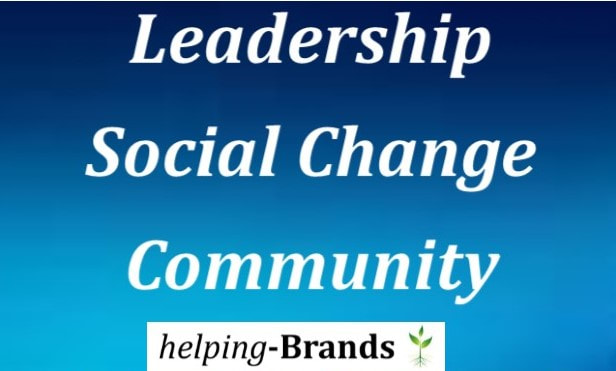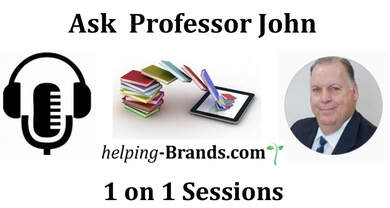Alternative Employment
Contracting, Entrepreneurship, Freelancing, Gig Economy
and building a professional practice
|
With years of experience and highly proven skills you may want to consider the various forms of Alternative Employment. Opening your own contacting, entrepreneurship, freelancing and/or building a professional practice.
In many cases the same skills you have learned and demonstrated in years working for others can be the platform of preparation for your own business. The skills to network, personal branding and using LinkedIn will all be of use in your building a small business. As our economy continues to move into a alternative employment environment it is better to go where the opportunities are growing. Projections are as we move to a contractor based economy there will be 50% of jobs that are independent contractors by the year 2020. As companies cut costs and do not want to fund benefits and medical insurance the move to using contractors to replace full time employees is moving at a rapid pace. A gig economy is an environment in which temporary employment is common and organizations contract with independent workers for short-term engagements. In today's workforce, people tend to change jobs several times throughout their working lives; the gig economy can be seen as an evolution of that trend. The word gig comes from the music world; a gig is a paid appearance of limited duration.
There are a number of forces behind the rise of the gig economy, including the proliferation of websites and mobile apps designed to help employers and people seeking part-time work find each other. Another important influence is a Milennial generation workforce that values work-life balance. Today's workforce is increasingly mobile and if a job is decoupled from location and work can be done from anywhere, gig workers are free to choose to work a series of jobs that are interesting and enjoyable, rather than?making a long-term committment to a single job that's not interesting or enjoyable, just for the sake of finanical security. Digitization has also contributed to a gig economy, decreasing the need for some types of jobs and automating others. From a business perspective, a gig economy can save a company financial resources in terms of less overhead. Gig workers don't require healthcare or retirement benefits. In a large company, hiring remote gig workers can free up office space and cut down on training costs. Hiring someone to complete a specific task also gives the company the ability to select the best individuals for specific projects from a larger hire pool and contract with experts for specific projects who might be too high-priced to maintain on staff full time. The gig economy is part of a shifting cultural and business environment that also includes the sharing economy, the gift economy and the barter economy. A study by Intuit predicted that by 2020, 40 percent of American workers would be independent contractors and members of the gig economy. According to the United States Department of Labor, the concepts that support a gig economy are more well-suited to work that requires the completion of a single task. Occupations that support the growth of a gig economy include arts and design, computer and information technology, construction and related services, digital and print media and communications and transportation. Gig workers may also be referred to as contingent workers, freelance workers or independent consultants. |
| ||||||
Reanin McRoberts
|
My Presentation to NhN Fort Lee is below you can download it,
I also wanted to share this GAO report recommending that DOL help share information with workforce boards to better serve gig workers. If anyone needs help feel free to share my contact info and I’d be happy to talk with them. The slides are attached, with links to sources, and all the platform logos are hyperlinked. if I can be of assistance, feel free to reach out to me at [email protected]. I would also love to connect on LinkedIn https://www.linkedin.com/in/reaninmcroberts/. | ||||||
WorkforceGPS Resources to Support Entrepreneurship
Resource Small businesses are the backbone of our economy, creating two out of every three new jobs in America. The Workforce Innovation and Opportunity Act (WIOA) allows local workforce systems to support youth and adults gain the entrepreneurial skills necessary to engage in work as an entrepreneur.
This month we highlight resources that amplify entrepreneurship as a service strategy. WIOA qualifying activities supporting entrepreneurship include skills and education training; career awareness and counseling; and services providing labor market and employment information about in-demand industry sectors. WorkforceGPS is full of reports, successful practices, tools and webinars that highlight the various Work-Based Learning (WBL) strategies.
We have gathered many of these resources in one location, taken from a number of communities including Apprenticeship, Innovation and Opportunity Network, LMI Central, Self-Employment Assistance Center, and others. Additional resources are constantly being added as this approach to learning becomes more and more recognized as a win-win for the individual and the employer. Relevant WorkforceGPS
Communities:
Self-Employment Assistance Center
Youth Connections
Resources
#GigEconomy: Strategies for Serving Self-Employed and Contingent Workers AARP Encore Entrepreneurs A Study of the Self-Employment Assistance Program: Helping Unemployed Workers Pursue Self Employment
Begin with the Basics
Boots to Business Reboot (B2BR)
Creating Entrepreneurship Pathways for Opportunity Youth
DOL Entrepreneurship Competency Model
Entrepreneurial Skills Training for Youth
Entrepreneurship in a YouthBuild Context
Native American Enterprise Initiative
Resources for Women Entrepreneurs
SCORE Entrepreneurial Courses on Demand
Small Business Development Toolkit
The Anatomy of an Entrepreneur
The Role of Entrepreneurship in Rural YouthBuild Programs
Veterans Business Outreach Centers (VBOCs)
Wagner-Peyser ES and UI – Supporting the Reemployment of UI Claimants
Young Entrepreneurs Series
Organizations
Minority Business Development Agency
SCORE
U.S. Chamber of Commerce
U.S. Small Business Administration
Innovations in Action
Denver Startup Week
Entrepreneurial Ecosystems in Appalachia
The Entrepreneurship Bootcamp for Veterans
The LinkedIn BlogBe Your Own Boss: Tracking the Freelance Economy with LinkedIn Data
Posted: 21 Oct 2015 09:01 AM PDT
I’ve always admired professional freelancers and wondered what it takes to make this transition. For example, my roommate has experience working inside Yale’s admissions office. Could he counsel and coach high school seniors? Or my friend who knows exactly how to do my makeup for any occasion. Could she take side gigs as a makeup artist? Even my dad, who has taken some of my most viral social media photos (thanks, dad!) could, potentially, freelance as a photographer. While these are my own personal observations, there’s obviously a much bigger economic and political discussion underway right now about freelancing. With this in mind, we began to examine the freelance economy from a LinkedIn perspective and surfaced some interesting initial insights:
What are the top industries for freelancing?
We began by focusing on LinkedIn members with the word “freelance” in their job title, and then we aggregated the most common industries and skill sets found (chart follows). The top results range from media and communications, to engineering and software development. This range indicates that careers in many fields may not be limited to formal employment and that those looking to hire for these specialized skills may not always need to turn to agencies or staffing companies.
Of the most popular industries, “Arts & Design” clearly comes out on top with roughly 46% of total freelancers on LinkedIn. And these freelancers don’t just work in traditional fine arts and graphic arts industries. They’re also illustrators, makeup artists, and musicians. If you’re considering freelancing in any of these fields, you will be in good company. And if you’re looking to hire in this area, you will have access to a broad range of skill sets on LinkedIn.
Posted: 21 Oct 2015 09:01 AM PDT
I’ve always admired professional freelancers and wondered what it takes to make this transition. For example, my roommate has experience working inside Yale’s admissions office. Could he counsel and coach high school seniors? Or my friend who knows exactly how to do my makeup for any occasion. Could she take side gigs as a makeup artist? Even my dad, who has taken some of my most viral social media photos (thanks, dad!) could, potentially, freelance as a photographer. While these are my own personal observations, there’s obviously a much bigger economic and political discussion underway right now about freelancing. With this in mind, we began to examine the freelance economy from a LinkedIn perspective and surfaced some interesting initial insights:
What are the top industries for freelancing?
We began by focusing on LinkedIn members with the word “freelance” in their job title, and then we aggregated the most common industries and skill sets found (chart follows). The top results range from media and communications, to engineering and software development. This range indicates that careers in many fields may not be limited to formal employment and that those looking to hire for these specialized skills may not always need to turn to agencies or staffing companies.
Of the most popular industries, “Arts & Design” clearly comes out on top with roughly 46% of total freelancers on LinkedIn. And these freelancers don’t just work in traditional fine arts and graphic arts industries. They’re also illustrators, makeup artists, and musicians. If you’re considering freelancing in any of these fields, you will be in good company. And if you’re looking to hire in this area, you will have access to a broad range of skill sets on LinkedIn.
What makes freelancers unique?
Our next step was to look at the unique characteristics of freelancers on LinkedIn. On average, our data shows that freelancers juggle roughly 2.1 gigs at once (indicated by members having more than one current role listed on their LinkedIn profile without an end date). With the flexible nature of freelance careers, people can work a full-time job concurrently or juggle multiple freelance gigs at a time—even for different skill sets. Looking at gender, there are also slightly more females than males freelancing which indicates that more women tend to freelance as there are slightly more males on LinkedIn overall.
Most importantly, our data shows that freelancers are LinkedIn power users. When we compare them to non-freelancing members across the same job functions, freelancers take the lead across the board — they have more recommendations, group memberships, skills listed, endorsements, and connections than average.
Our next step was to look at the unique characteristics of freelancers on LinkedIn. On average, our data shows that freelancers juggle roughly 2.1 gigs at once (indicated by members having more than one current role listed on their LinkedIn profile without an end date). With the flexible nature of freelance careers, people can work a full-time job concurrently or juggle multiple freelance gigs at a time—even for different skill sets. Looking at gender, there are also slightly more females than males freelancing which indicates that more women tend to freelance as there are slightly more males on LinkedIn overall.
Most importantly, our data shows that freelancers are LinkedIn power users. When we compare them to non-freelancing members across the same job functions, freelancers take the lead across the board — they have more recommendations, group memberships, skills listed, endorsements, and connections than average.
What does this data mean for you?
Looking at this data can help both sides of the gig economy. On one hand, we recommend that people looking to hire leverage their network and their connections’ profile data—from specific skills and endorsements, past experiences, and client recommendations—to find the best match for their projects.
On the other hand, the data also shows that regardless of current employment status, many people have relevant skills that are valuable to others. The vision of LinkedIn’s Economic Graph is to be able to digitally map all aspects of economic activity around the world—people, skills, jobs, companies, schools, and professional knowledge. And data shows that the gig economy is going to have a huge macroeconomic effect on the economy and unemployment—according to the 2015 McKinsey Global Institute Report, up to “200 million who are inactive or employed part time could gain additional hours through freelance platforms.”
LinkedIn is also starting to explore how we can help connect our members with the right freelance professionals by leveraging the power of our network. This week, LinkedIn began the pilot phase of a new platform, LinkedIn ProFinder, focused on design, writing/editing, and accounting services in the San Francisco Bay Area. We plan to learn from this test before expanding the experience to other categories and geographies.
Ultimately, we hope this data inspires you to think about your marketable skills or perhaps identify areas for ongoing skills development. And who knows, you might turn what feel like small interests today — like coaching, photography, maybe even blogging — into much bigger career changes tomorrow.
Methodological details: The results of this analysis represent the world as seen through the lens of LinkedIn data. As such, it’s influenced by how members choose to use the site, which can vary based on professional, social, and regional culture, as well as overall site availability and accessibility. These variances weren’t accounted for in the analysis.
We first determined the population of freelancers as members who included the word “freelance” in their job titles and mapped them to different job functions. We then took the population of non-freelancers as members with the same job functions who didn’t include “freelance” in their job title (i.e. “graphic designer at Apple” vs “freelance graphic designer”). For both populations, we looked at the average number of skills, endorsements, groups, recommendations, and connections per member. Finally, we looked at the average number of gigs the members had once as the number of current positions listed on a member’s LinkedIn profile without an end date.
The Freelance Economy: Top Trends to Watch in 2017
Freelancers now account for nearly 35% of the U.S. workforce and the trend is only picking up speed with more professionals opting to create their own jobs in lieu of more traditional full-time employment.
As we head into the new year, we want to shed a bit more light on this burgeoning sector of the workforce. What kind of location, industry and demographic trends are surfacing among the freelance professionals of 2016? You might not know, for example, that a whopping 40% of our freelancers are concentrated in just four states: California, Texas, Florida and New York. Or that more senior men are most likely to take the leap into freelancing.
The time is ripe to be a freelancer in America so we’re revealing insider insights like these to help you learn more about this trending profession.
Freelancers now account for nearly 35% of the U.S. workforce and the trend is only picking up speed with more professionals opting to create their own jobs in lieu of more traditional full-time employment.
As we head into the new year, we want to shed a bit more light on this burgeoning sector of the workforce. What kind of location, industry and demographic trends are surfacing among the freelance professionals of 2016? You might not know, for example, that a whopping 40% of our freelancers are concentrated in just four states: California, Texas, Florida and New York. Or that more senior men are most likely to take the leap into freelancing.
The time is ripe to be a freelancer in America so we’re revealing insider insights like these to help you learn more about this trending profession.
















































